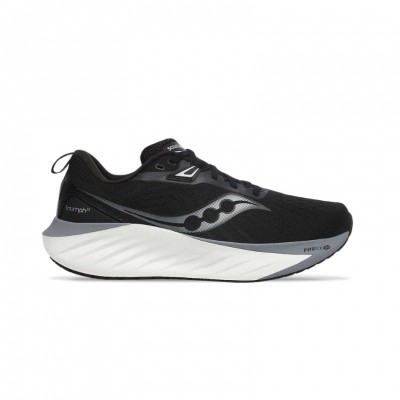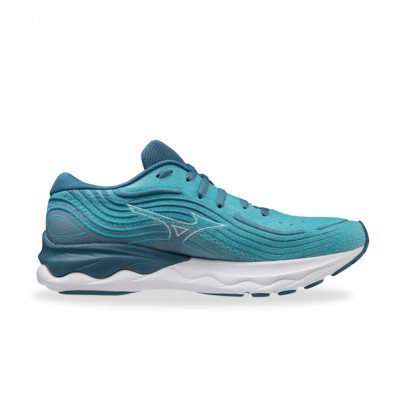The surfaces on which athletes exercise and the speed at which they perform their workouts can play an important role in increasing the likelihood of injury whether you are an experienced runner or a newcomer to running.
To understand the reason for this relationship we must be clear that running is an exercise that involves a series of collisions between the body and the ground, as the right foot impacts with the surface on which they are exercising the muscles of the right leg contract and reverse the downward velocity of the body, accelerating upward and forward; less than half a second later the left leg performs the same movement.
You may be interested in: Types of sports injuries you can suffer while running and how to identify them.
These impacts and the consequent return of energy occur very quickly, the runner will perform it with an average frequency of 180 times during per minute, or more than 37,000 times over the course of a three and a half hour marathon. During impact with the ground, the muscles and tendons of the leg act like a spring, absorbing the energy to release it later in the running cycle.
But the legs are not the only ones involved in this process, the surface and the shoes also act as springs, absorbing and releasing energy. Therefore taking into account that many times we run on different types of surfaces with the same type of shoes our body will have to change the stiffness of the legs in order to maintain our body level; the inevitable impacts against the ground, the speed and the surface on which the race takes place are factors that are interrelated and can produce injuries.
You may be interested in: Guide to choosing the right Running shoes
Surface hardness and running speed
As you undoubtedly know, the hardness of a running surface significantly affects how fast an endurance runner can maintain for a given time. For example, in a U.S. study in which a group of runners ran at the maximum possible speed on different types of surfaces (harder and less hard), the runners were much slower on the softer surfaces.
The researchers determined that foot contact time (i.e., the duration of the stance phase in the running cycle) was almost three times faster on the stiff surfaces compared to the soft ones, which of course slowed the runners' strides quite dramatically.
Are stiff surfaces injury-causing?
Being objective people who run weekly 3 a week all year round are most likely to suffer an injury during the next year. And all this despite the innovations that sports companies are making in cushioning and support technologies.... The rate of running injuries has not decreased.
One of the reasons this rate has not changed is probably because each runner is his or her own laboratory, injuries and what to do and what not to do depend on running technique, body morphology, gender, genetics and a whole host of other factors.
There is an individuality to every runner, part of that individuality is the speed at which you run and the surfaces you choose to run on. Some prefer the mountain trails and others prefer to hit the asphalt.
So the question surge, what are the best surfaces and how fast should I run to avoid injury?
The answer to these questions is not as simple as you might think, largely due to the fact that many of the common notions about the causes of running injuries fall short of scientific analysis.
Despite popular belief that running on trails or softer surfaces is less damaging to joints, scientific evidence says otherwise. It turns out that the brain has its own version of a vehicle's suspension system, something called "muscle tuning."
While running, the brain constantly anticipates stiffness using data provided by experience on those surfaces and information from the previous step and then "tunes" how hard the leg muscles contract before the foot impacts the ground again.
So when the trail becomes softer, the leg becomes stiffer, the net effect on the leg is about the same, this is why exercising on softer surfaces does not necessarily lead to a lower injury rate. The overall impact on the leg remains about the same whether the running is done on a beach, on a trail or on asphalt.
No scientific evidence
What we learn from this is that there is no scientific study that conclusively establishes that running on a soft surface will decrease injuries or that running on a hard surface will increase them.
The best option to avoid injury, experts say, is to: mix it up. Incorporate a variety of surfaces into your training, including grass, dirt, asphalt and trails.
What about speed?

What is the optimal speed for running, it is often misunderstood that exercising at higher speeds is directly related to a greater chance of injury. In other words, running faster equates to a higher risk of injury.
But again, remember that every runner is different and slower is not always better. Several recent studies illustrate this statement. A 2015 article in the Journal of Orthopaedics and Sports Physical Therapy adds some light on the relationship of running speed as a function of the impact knees experience when a person exercises. Researchers asked a group of runners to perform a 1-kilometer run at three different speeds: 8 km/h, 11 km/h and 15 km/h.
Although the impact on the knee increased with each step as they ran faster, the total knee strain was 30% less at the faster speed due to the number of steps required to cover the same distance. Based on these findings, running longer distances at slower speeds, especially if you are tired, may contribute to knee overuse injuries.
But beware, running faster is not the solution.
But running faster is not the solution either, other studies indicate that the additional energy supplied by the calf and foot muscles during increased speed predisposes to injury to the Achilles tendon or plantar fascia.
So what do we do?
There is therefore another group of scientists who are inclined to provide some general recommendations:
- Posture and running technique should be analyzed; beyond the surface or speed it is undeniable that a good technique is essential to avoid injuries, the posture always upright, land the foot with the middle part (do not do it with the heel), tilt the body keeping aligned shoulders, hips, the body must be straight.
- It is important to train at different speeds, experts suggest following a running plan and not to increase the speed abruptly, without first having brought the body to an optimal level of warm-up, likewise should not suddenly change the speed of a race but do it gradually. The ideal cadence is 180 steps per minute.
- Make an analysis of your footprint, this way you can choose shoes that meet your specific needs, remember that many sports stores have equipment to analyze the footprint or you can visit a specialized sports clinic.
- If you feel discomfort while running, stop. Perhaps you are experiencing a new route and you start to feel pain, it is important that you differentiate between fatigue and pain that occurs as a result of an injury.
- Hire the services of a coach. To run well you need to train well. But we must also have the right equipment, warm up before starting the race and stretch at the end of it, we must take care of our technique and posture.
In conclusion
There is no single surface or speed that is ideal for everyone. For runners looking to avoid injury, cross-training should not only involve the elliptical or bike, but also exercising on different surfaces and at varying speeds.
Value your common sense and listen to your body, the chances of injury increase when we overlook the warning signs that we are doing something the wrong way, if you have doubts about your technique seek the help of professionals to give you the necessary advice.
Read more news about: Sports Injuries



















